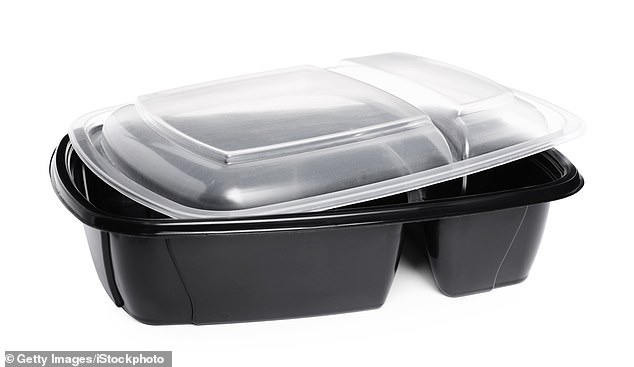Why these kitchen utensils could expose households to cancer-causing chemicals
An alarming new study puts a spotlight on common household items that could put consumers at risk by exposing them to a chemical compound that has been banned since 2021.
Plastics from electronics are often recycled and made into common household items, such as cookware and children’s toys.
Black colored plastic has been found to contain potentially ‘alarming’ levels of toxic flame retardants released during recycling processes.
However, health concerns have been raised following the Chemosphere findings, which highlight the potential dangers of plastic recycling.
Plastics from electronics are often recycled and made into common household items, such as cookware and children’s toys
The study found traces of flame retardants, used in electronics, in 85 percent of the 203 black plastic products tested.
“Despite the lack of transparency and restrictions, plastics from electronics are often recycled and can be incorporated into household items that do not require flame retardancy, resulting in potentially high and unnecessary exposure,” the study said.
An estimate was found of exposure to the limited substance BDE-209, a form of decaBDE one of the flame retardants found in kitchenware in the study indicated that users would have a “median intake of 34,700 ng/day.”
This is said to be greater than the amount we are estimated to be exposed to from dust and food. DecaBDE has been extensively researched and was banned by the U.S. Environmental Protection Agency in 2021.

Lead author Megan Liu said: ‘These cancer-causing chemicals shouldn’t be used to begin with, but recycling puts them into our environment and into our homes in more ways than one. The high levels we found are concerning.”

Traces of the toxic substance were found in high concentrations in children’s toys and jewelry
The compound has been linked to cancer, endocrine and thyroid problems, fetal and child development, reproductive and immune system toxicity, and neurological functions such as memory.
Lead author of the study, Megan Liu, said CNN: ‘A product with one of the highest levels of flame retardants was black plastic pirate coin beads that children wear – they look like Mardi Gras beads but are more suitable for costume clothing’
Liu also said that the most common flame retardants found in consumer products are the same ones used in electronic casings of products such as televisions, and that these were mixed into consumer items due to “errors in electronic waste recycling,” the outlet reported.
The research showed that the highest concentrations occur in sushi bowls, bead necklaces and kitchen utensils.
Although the study only looked at black plastics, there are still concerns about other household items. Liu recommended replacing your black utensils with stainless steel or glass, but urged stricter safety standards and monitoring of toxic products.
She added: ‘These cancer-causing chemicals may not be used in the first place, but through recycling they end up in our environment and into our homes in more ways than one. The high levels we found are concerning.”
